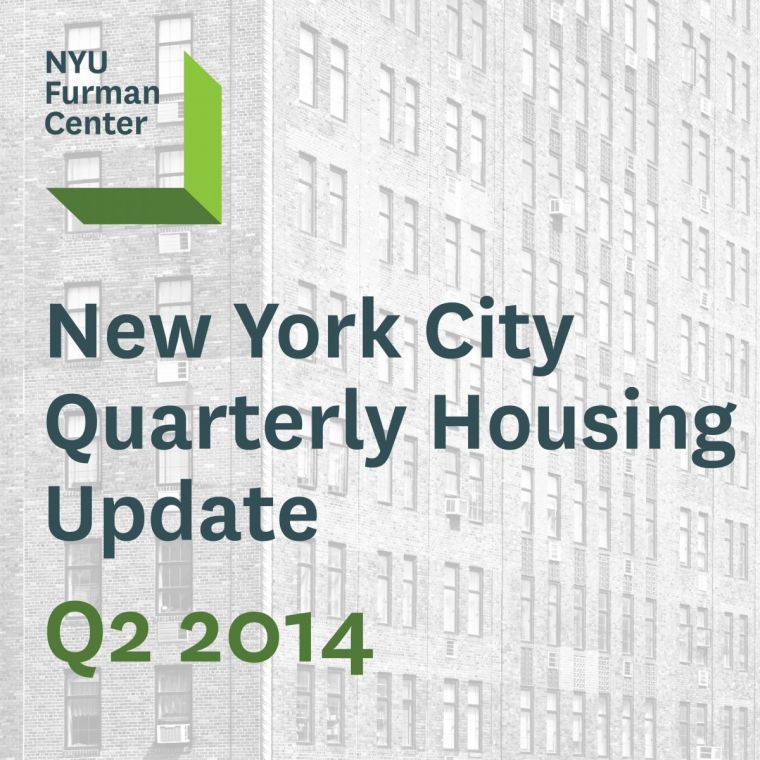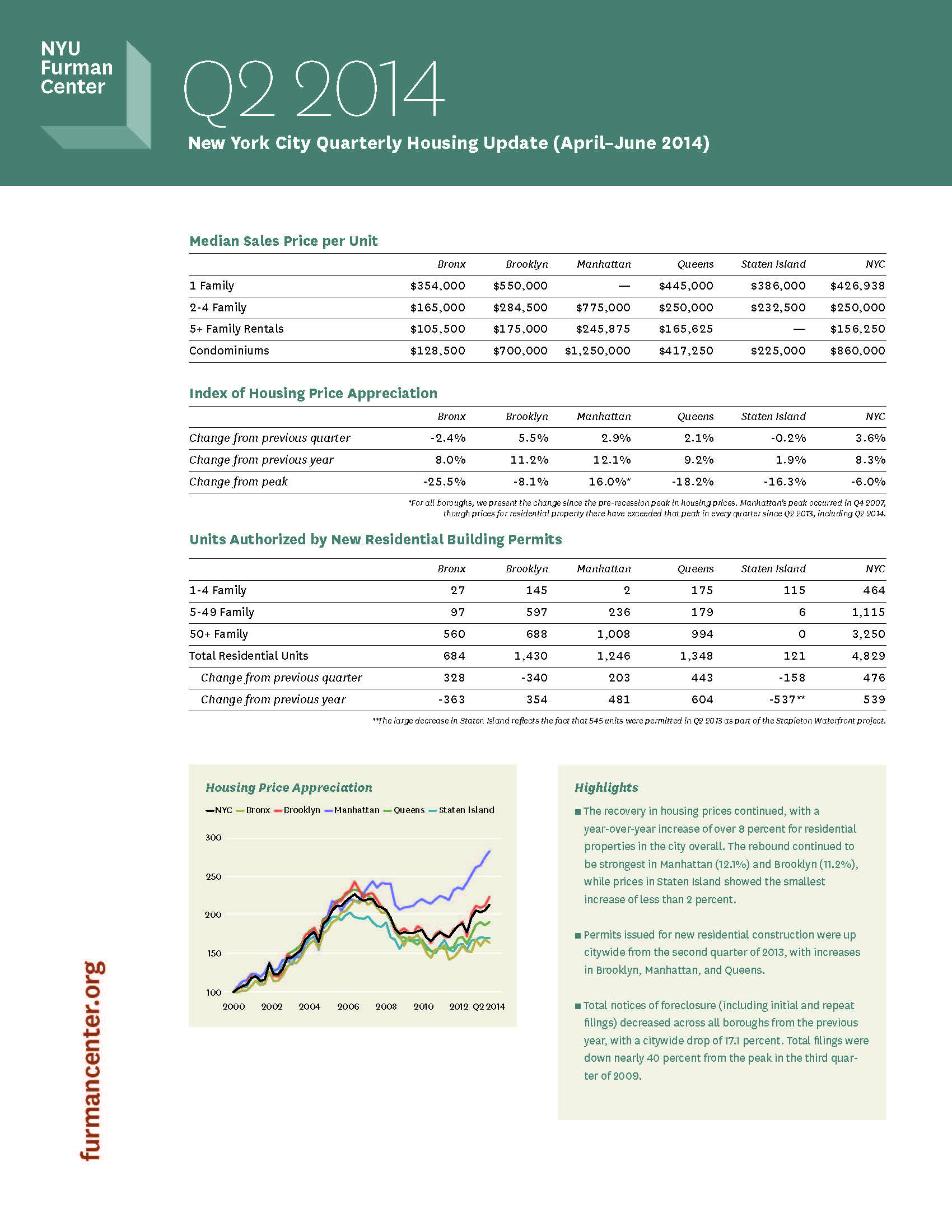
Report: Second Quarter Sees Citywide Drop in Notices of Foreclosure

Total notices of foreclosures (including initial and repeat filings) decreased in all boroughs since the previous year, with a citywide drop of 17.1 percent, according to the 2014 Quarterly Housing Update: 2nd Quarter (PDF), released today by the NYU Furman Center. Since the peak in the third quarter of 2009, total filings have decreased by nearly 40 percent.
The report found that initial foreclosure filings (indicating owners entering foreclosure for the first time) for one-to-four-family homes and condominiums decreased significantly in all boroughs, with a near 35 percent drop citywide. Queens saw the largest decrease, where initial filings fell by 41 percent from the previous year. This is the se cond quarter in a row with year-over-year decreases in initial foreclosure filings.
cond quarter in a row with year-over-year decreases in initial foreclosure filings.
Repeat foreclosure filings, however, increased by over 7 percent citywide from the previous year, indicating that while there are fewer borrowers entering foreclosure, those that are already distressed may be struggling to resolve their delinquency.
Second quarter residential property prices in New York City had a year-over-year increase of 8 percent. The rise in housing prices continued to be strongest in Manhattan, with a 12.1 percent increase, followed by Brooklyn where prices increased by 11.2 percent. Staten Island saw the lowest increase in residential property prices, with a less than 2 percent increase.
The NYU Furman Center found that units authorized by new residential building permits increased overall from the second quarter in 2013, with growth in Brooklyn, Manhattan, and Queens.
The NYU Furman Center’s Quarterly Housing Update analyzes up to six key indicators of housing market performance based on a variety of administrative data sources. The Quarterly Housing Update incorporates a complete picture of sales data, residential development indicators, and foreclosures in New York City. It also presents a localized repeat sales index for each borough to capture price appreciation while controlling for housing quality.
Read the press release or read the full report (PDF).


